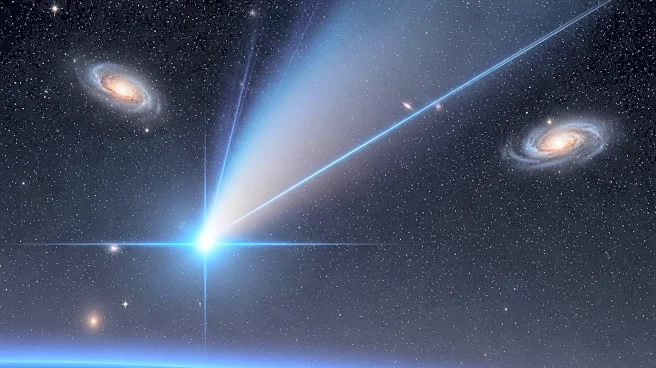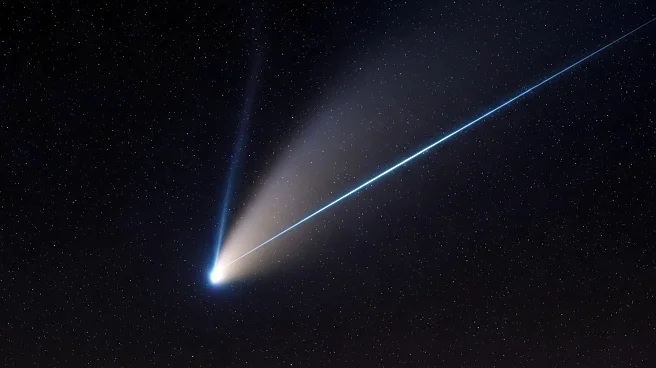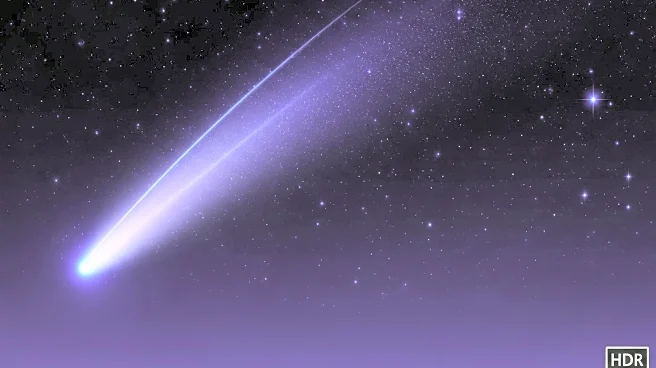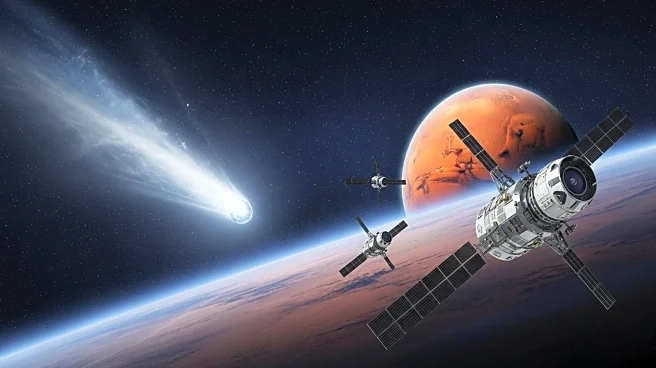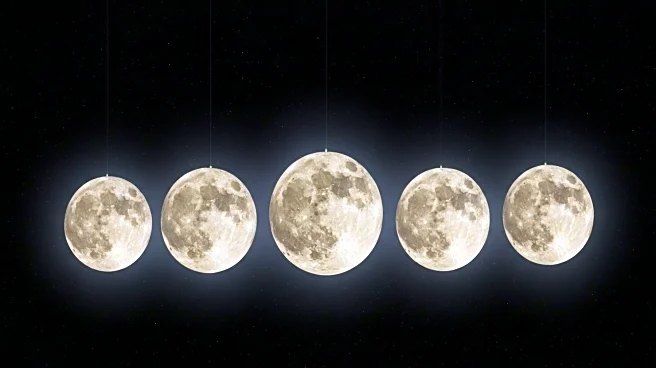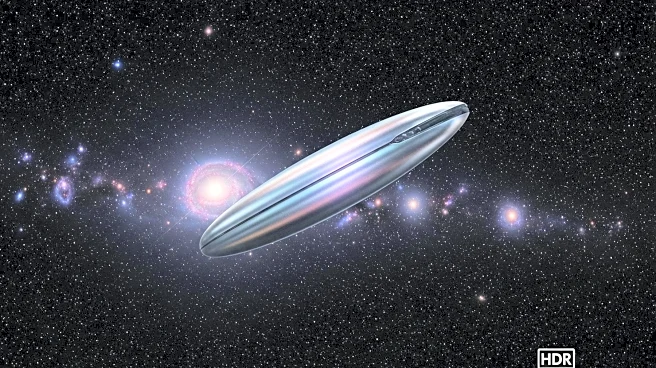What's Happening?
Comet C/2025 A6, known as Comet Lemmon, is making a close approach to Earth, providing a rare opportunity for skywatchers to observe its unusual green glow without the aid of telescopes. Discovered on January 3 by astronomers at the Mt. Lemmon SkyCenter in Arizona, the comet is traveling at nearly 130,000 miles per hour. It will make its closest approach to Earth on October 21, coming within 56 million miles, which is considered a relatively close pass in astronomical terms. The comet will then reach its nearest point to the Sun, known as perihelion, on November 8 before heading back to the outer solar system. The green glow of Comet Lemmon is attributed to diatomic carbon, which emits a bright green light when hit by sunlight. The comet's vibrant tail, composed of gas, ice, and dust, adds to its visual appeal.
Why It's Important?
The approach of Comet Lemmon is significant as it offers a rare chance for both amateur and professional astronomers to observe a nonperiodic comet with a long orbital period of approximately 1,350 years. Such events are infrequent, making this a unique opportunity for scientific study and public engagement with astronomy. The comet's visibility to the naked eye could inspire interest in space and science, potentially influencing educational and outreach activities. Additionally, the gravitational forces from a recent encounter with Jupiter may alter the comet's orbit, shortening its journey by up to 200 years, which could have implications for future observations and studies of cometary behavior.
What's Next?
As Comet Lemmon continues its journey, astronomers will monitor its path and any changes in its orbit due to gravitational interactions. The comet is expected to be most visible in mid-October, particularly in the Northern Hemisphere, where stargazers can look for it in the constellation Lynx. This period will be optimal for observation, especially before dawn or shortly after dusk. The event may also coincide with sightings of other transient comets, such as SWAN R2 and 3I/ATLAS, providing a rich field of study for astronomers and enthusiasts alike.

